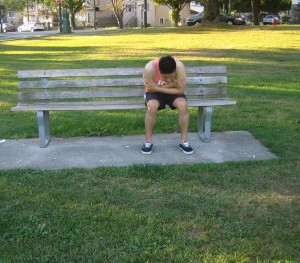Bursitis is the inflammation of the bursa in which the bursa in the hip becomes irritated and inflamed. The bursa that covers the bony point of the hip bone is called the greater trochanter. Another one is the iliopsoas bursa which is located on the inside or groin side of the hip and when this is inflamed, it is called hip bursitis. The pain can be felt in the groin area. The main symptom of hip bursitis is pain or “hip pointer”. The pain usually spreads to the outer thigh during night time especially when lying on the affected hip. The pain is usually sharp and severe and eventually becomes dull and achy.
[youtube url=”https://www.youtube.com/watch?v=8xA53i4CuW0″ width=”200″]http://www.youtube.com/watch?v=9ttt4mO3cYk[/youtube]Hip bursitis develops when the bursa sac that contains fluid that function in the lubrication of the gliding movements of the hip is irritated and inflamed due to physical activities such as standing too long and overuse of the hip joints. The condition causes aching, burning and stiffness of the affected area and also swelling of the bursa sac. In addition, the hip is usually sensitive to the touch.
Symptoms of hip bursitis

- Symptoms start with a mild, dull soreness that can be felt around the outer part of the hip that is oftentimes caused by stooping and climbing stairs.
- Trochanteric bursitis becomes severe and painful when left untreated for too long, especially when lying on the affected side.
- An increased pressure causes a “snapping” or “grinding” sensation felt especially when walking and climbing stairs.
- Walking becomes difficult and painful due to the pressure exerted on the hips and bursa sac during the phases of walking activities.
- During walking activity, the bursa sac causes constant friction against the bursa from the iliotibial band and trochanter which is the outside of the femur bone that will result in severe pain and limping.
Treatment and home remedies
- Rest and isolate the affected hip in order to minimize irritating the condition.
- For the first 48 hours, apply an ice pack directly over the affected area in order to reduce swelling and pain at 20 minute intervals throughout the day every 3-4 hours. You can learn more about cold therapy by enrolling in a first aid course
- When the swelling has subsided, apply a hot compress in order to promote blood circulation in the area.
- Take anti-inflammatory medications such as ibuprofen and naproxen since they help reduce swelling, inflammation and pain.
- Avoid sleeping on the side of hip that is affected by bursitis. You have to place pillows between the legs if sleeping on the opposite of the affected area. When wearing shoes, if the other leg is shorter than the other leg, a shoe lift can help lessen the hip bursitis.
- Perform some exercises in order to promote flow of blood to the muscles and ligaments present in the hip.
